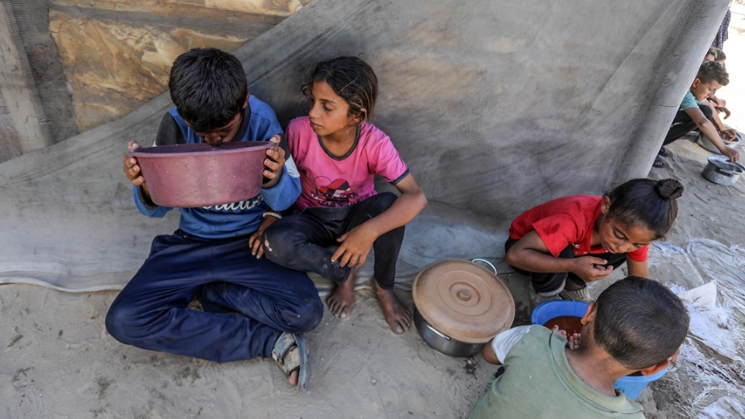A new report released by the United Nations reveals that child malnutrition rates in Gaza have more than doubled since March 2025, highlighting the devastating impact of ongoing conflict, border restrictions, and limited humanitarian access in the region.
Acute malnutrition among children in Gaza increases due to war-related shortages

The UN agencies attribute the alarming rise in wasting and stunted growth among children in Gaza to months of heavy fighting, disrupted food supply chains, lack of access to healthcare, and the near-total collapse of essential infrastructure.
According to data published by UNICEF and the World Food Programme the number of children under five suffering from acute malnutrition in Gaza has increased by 110% over the last four months.
“This level of child malnutrition is a clear sign of a deepening humanitarian catastrophe,”
Said -Adele Khodr, UNICEF Regional Director for the Middle East and North Africa.
Wasting, which is the most dangerous form of malnutrition, results in a child becoming dangerously thin for their height. If left untreated, it can lead to permanent physical and cognitive damage or death.
Gaza’s healthcare system is overwhelmed and under-resourced
Hospitals in Gaza, already damaged by repeated airstrikes and resource shortages, are struggling to treat severely malnourished children. Medical staff are seeing more cases of diarrhea, dehydration, infections, and micronutrient deficiencies.

The United Nations Office for the Coordination of Humanitarian Affairs warned that Gaza’s health system nears total collapse and urged immediate international intervention to prevent a sharp rise in child deaths in the coming weeks.
Long-term impact of Gaza food crisis on child development and survival
Experts warn that the long-term effects of prolonged malnutrition among children in Gaza could last for generations. Poor nutrition in early childhood can lead to permanent stunted growth, weakened immune systems, delayed brain development, and a higher risk of chronic illness later in life.
There is also an increased risk of non-communicable diseases such as heart disease, diabetes, and respiratory illness later in life. As noted by public health researchers, the effects of early malnutrition can reappear decades later in the form of chronic health burdens.

